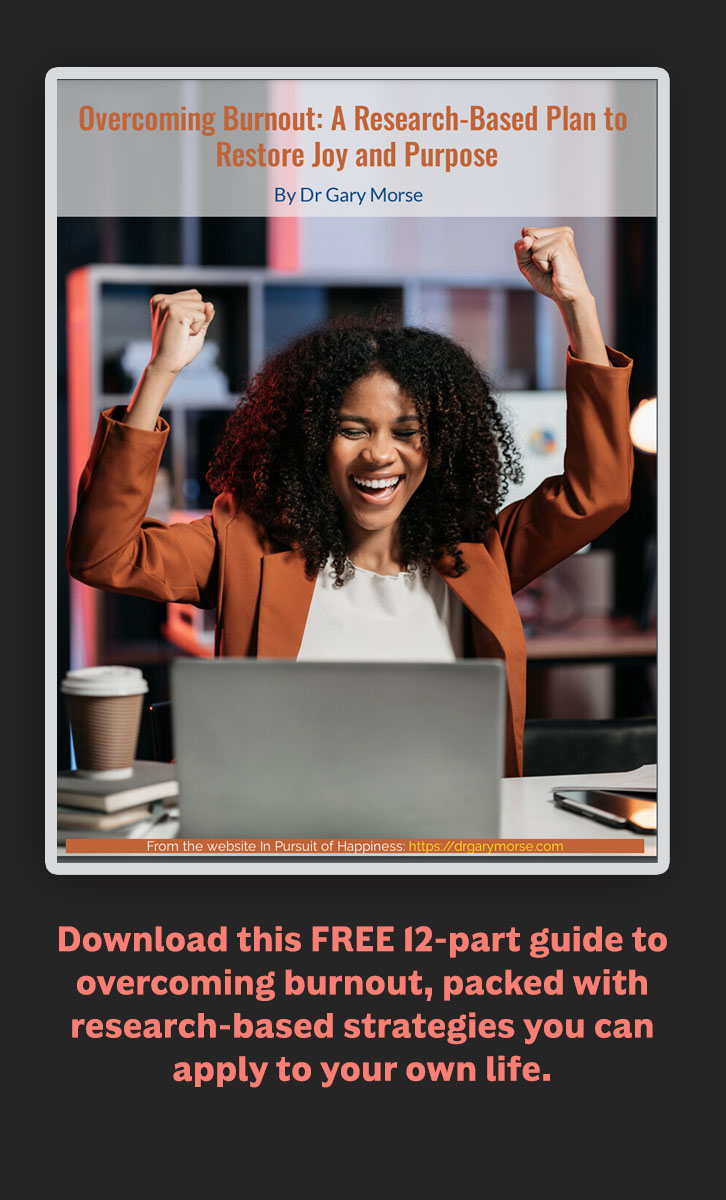Just when we were hoping things would get better with burnout, they have gotten worse. Burnout reached record highs during the COVID-19 pandemic emergency. And while the worse of COVID has passed (though it is far from over), new surveys show that burnout has surprisingly increased rather than decreased. For example, one recently released report found that 59 percent of American workers experienced at least moderate levels of burnout—an increase from the height of the pandemic. An international study also found that the current rate of burnout globally is higher now than during the pandemic. These increases in burnout are on top of already high and escalating burnout figures among workers prior to the pandemic. So, amid this growing epidemic in the U.S. and other countries, how can you combat this chronic work stress condition?
Burnout Is No Joke
The question is a critical one because burnout is no joke. Burnout has a number of negative consequences including emotional exhaustion, depersonalization, and low feelings of achievement. Further, people who are burned out also tend to experience a wide range of associated problems, especially with their mental health, such as symptoms of anxiety and depression. Other common problems include sleep disturbance, headaches, substance abuse, conflicts with family and friends, and job performance. Burnout is also costly for employers, given losses in productivity, turnover, and new training demands.

Image by Gerd Altmann from Pixabay
Fortunately, you can take steps to fight burnout and improve your work well-being. And the start of a new year is a great time to learn and practice new skills. However, some writers are focused exclusively on suggesting that companies change their policies and practices to reduce employee burnout. For example, common recommendations include that companies should improve communication, ensure accountability, maximize autonomy, and set clear priorities. Those kind of changes in business organizations would be great—if companies actually did make the changes.
Do You Want to Wait on Your CEO?
But do you really want to wait and depend on your CEO taking responsibility for changing the company for the benefit of your personal health and well-being? There are three major problems with this approach.
- Company executives and the company may never make all the changes necessary to help you overcome burnout. Even if they are interested in reducing burnout (and many are), companies are complex organizations that are not easy to change, especially in the core ways that are necessary to create healthier workplaces.
- Relying on the company for overcoming burnout puts you in a dependent position. Even worse, the premise that companies must be the source for preventing burnout is a belief that unwittingly disrespects the abilities of individuals to be active participants in their own well-being. You have the potential to fight burnout.
- The best approach to overcoming and preventing burnout relies neither solely on the company nor the individual employee. Rather, a comprehensive, systemic approach that addresses worker well-being through multiple layers—including the company, supervisors, and you as the employee—are ones that will be most helpful.
So, working with your company to improve conditions that lead to burnout is great. Company leaders and also supervisors can take useful steps to fight burnout, as I have previously posted.
You Can Take Positive Steps
But for the greatest benefit, it is important for people to take personal steps to increase their resilience to work stress. In particular, you can combat burnout and improve your well-being by learning strategies and skills to cope with the inevitable stress of work.

Photo by Amy Hirschi on Unsplash
This post is the first of a multipart blog series that will be posted over the upcoming few months to help individuals to learn effective strategies and skills for reducing burnout. These strategies and skills are adapted in large part from BREATHE, a research-based burnout reduction/prevention program, and described in greater detail in a forthcoming book, Finding Purpose and Joy in a Burned Out World: How you Can Overcome Burnout. After describing the basic approach to reducing burnout in the next blog, the following posts will describe strategies and skills in eight key areas:
- Core contemplative or stress management practices
- Cognitive and positive psychology methods
- Building meaning and joy
- Reclaiming your time (effective time management)
- Physical wellness strategies
- Building positive social connections
- Creating “mini-retreats”
- Harnessing your own natural renewal activities
The series will conclude with helping you to develop a personalized plan to fight burnout. You can sign up to receive each new post via your email inbox or wait for them to be posted on this site. In any case, isn’t it time to take control of your own personal well-being at work?



Follow Me: